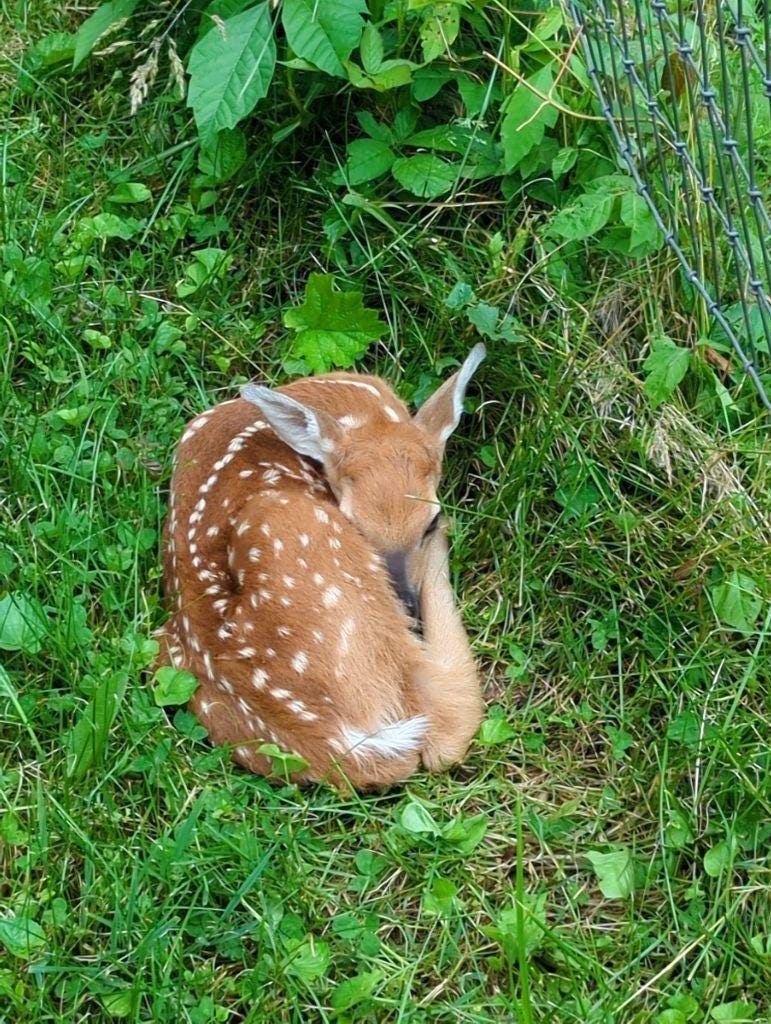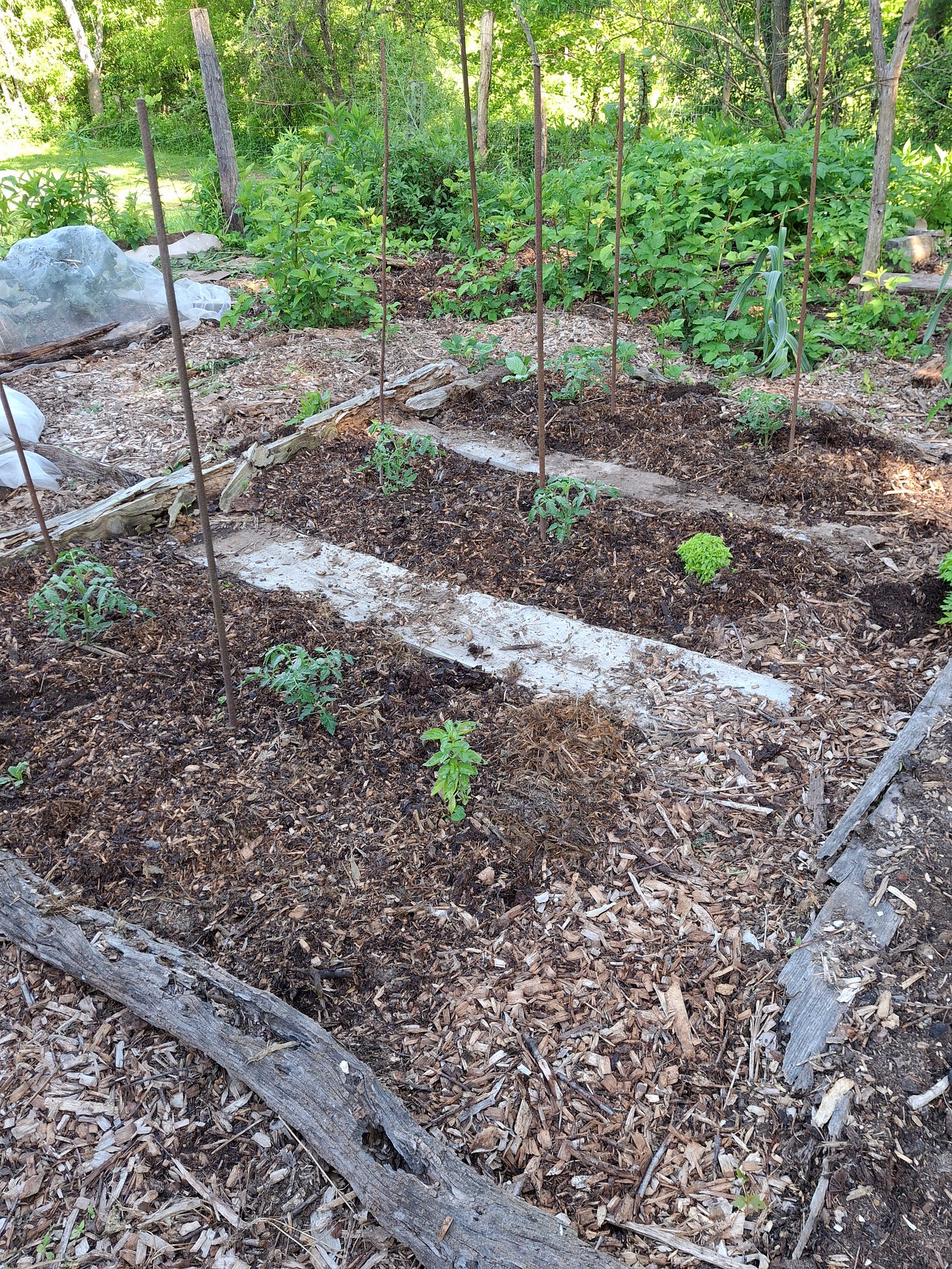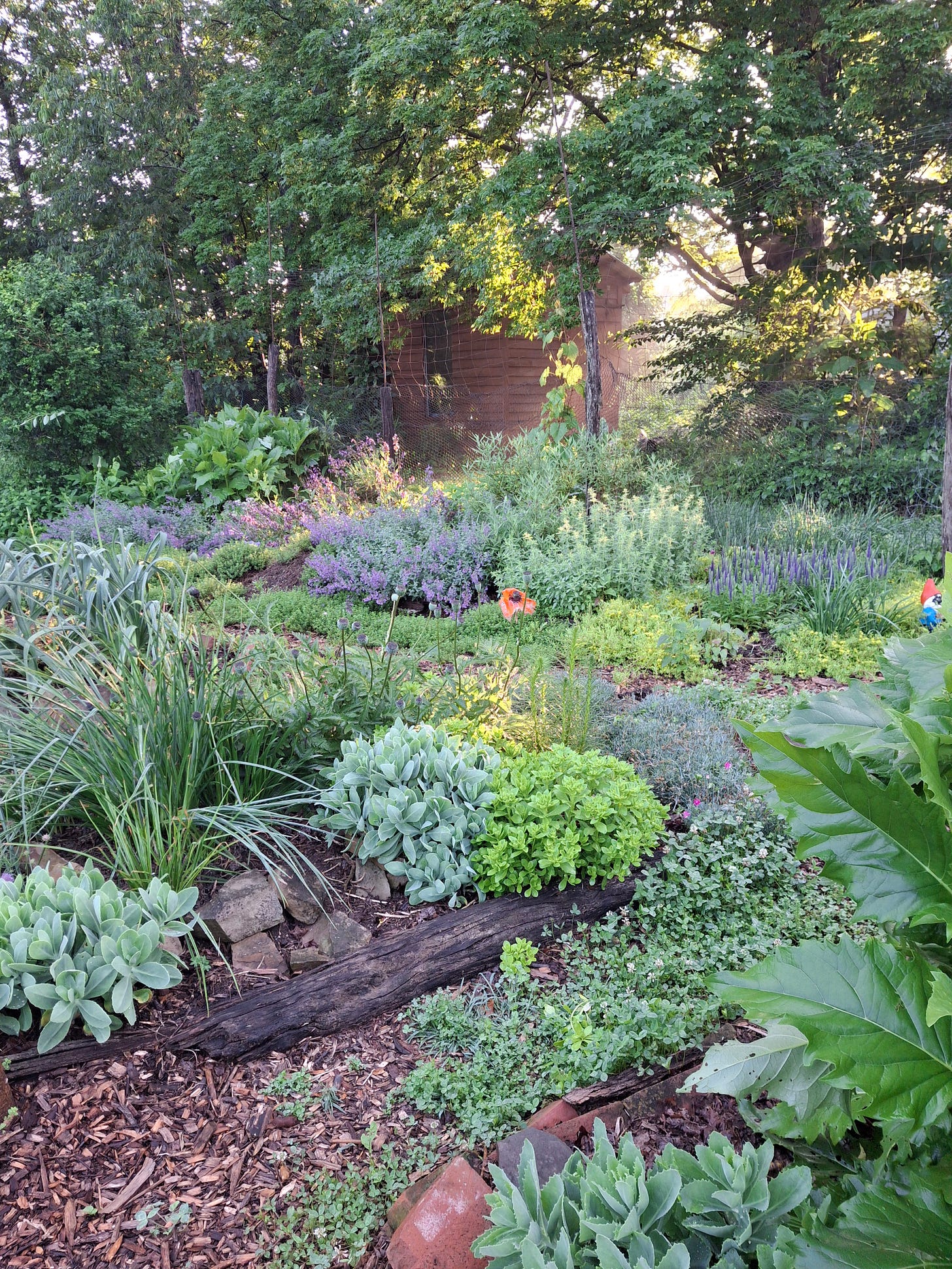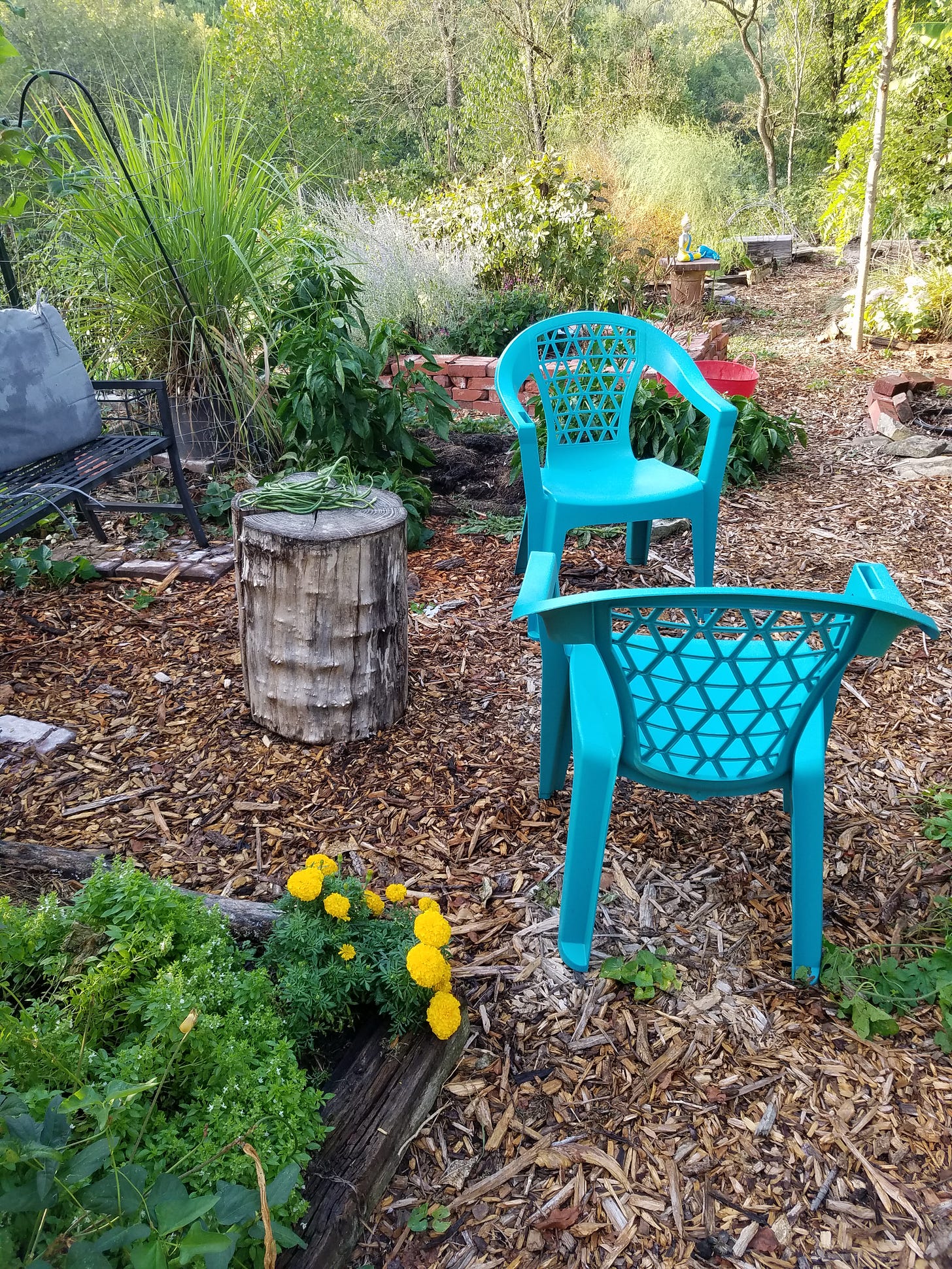In the next few posts I will discuss the main concepts guiding the development of the potager, and how you can put them to use to nuture your own garden space.
Central raised bed doubles as a propagation center
I grew up in a time and place where the traditional approach to gardening was to separate areas devoted to food production from those given over to ornamentals. My parents’ vegetable garden consisted mostly of annuals and my mother's flower beds were filled with perennials. The flower beds were close to the house, the veg patch a slightly farther walk from the door. It was beautiful and productive, but I've discovered in my own garden that integrating everything lessens work and streamlines the entire process.
A very compelling reason for combining everything is to protect your garden from deer. It is much cheaper and easier to build one very good fence than to attempt to exclude deer from many small plots. For many in the eastern United States, white-tailed deer are the major impediment to successful growing and it is best to acknowledge this and build protection into your plan from the beginning.
Discovered by my son just outside the horse fence, one of many fawns born on the property at the end of spring
You might have gardened for several years without deer damage, but you should view this situation as not having deer damage yet. Don't be complacent. Don't think you can plant an area off to the side to lure deer away from your precious plants. It won't work. Put up the fence. The initial work and expense will pay off and you will avoid years of scrambling to find repellents or other non-fence methods that only work temporarily.
Putting everything together in one enclosed space allows for much more efficiency in labor. I maintain one area where many activities take place, from harvesting veg to sipping morning coffee, hanging out in the evenings after the shade comes on to walking around sampling ripe berries. Making the potager as beautiful and as comfortable as possible makes me want to spend as much time there as I can. A centrally-located tool box allows me to take care of small tasks as I notice them, which helps to keep work from becoming overwhelming.
An old mailbox makes a perfect tool holder
The benefits of a centralized and lovely garden space which encourages the gardener to spend more time cannot be overstated. The advantages of this set-up extend beyond the psychological, however. Most gardens aren't a perfect blend of flat ground and full sun. The fenced potager includes slopes and shady spots where trees overhang. By locating all kinds of plants plus utilitarian zones inside the fence, I can take maximum advantage of all conditions. The compost pile is down over the hill in the shade. Herbs and ornamentals line the bed that receives morning shade without negative effects.
Annual bed with tomatoes, basil, and borage
For the most part I grow annuals and perennials in separate beds for ease of care. There are exceptions such as the dwarf mulberry which gives afternoon shade to lettuce, and a young currant bush sharing a bed with onions. There is nothing wrong with combining annuals and perennials if it works for you. Because the soil must be regularly disturbed in annual beds, I find it easier to keep them separate. I like to dedicate about 10 sunny beds to intensive vegetable production.
Within perennial beds, all combinations are acceptable. Ornamental plants rub shoulders with culinary herbs and pollinator attractors. There is no reason to segregate plants by type if they get along well together and thrive in similar conditions. In fact, once I stopped thinking of plants belonging exclusively to one of these groups, gardening became easier. Many herbs have uses in the kitchen, are beautiful, and also have something to offer birds and insects. However, it is also perfectly fine to grow a plant simply because I like it — not all all plants must have multiple functions.
Herb/ornamental/pollinator area
Gardens like mine are often referred to as cottage gardens, and I read a little about these spaces while writing about mine. The first use of the term is a bit cloudy, but it is generally agreed that this type of garden became popular in Europe during the Middle Ages. What we recognize today as merely an aesthetic has its roots in practicality. One article speculated that cottage gardens took off during the Enclosure Movement, as peasants lost access to land previously held in common. The land still available to them immediately surrounding their homes became more important for survival and was filled with all manner of useful plants.
We could learn something from peasants who strove to make full use of land to better their lives. Most of us have vanity lawns and cookie cutter foundation plantings around our homes. Not only do such spaces provide little of value, they are black holes sucking in time, energy, and synthetic chemicals. This seems to me like the opposite of progress.
Annual pots, just because
Because a slow transition is much easier than an abrupt one, I recommend beginning now to establish a garden that provides something useful. Your idea of utility might be different from mine, but the principles remain the same. Centralizing and enclosing everything in a spot close to the house boosts all yields.
One essential element that shouldn't be left out of any garden space is a resting spot. This can be elaborate with a permanent patio and outdoor furniture, or simple like mine: a mulberry stump table and chairs that can be moved with the shade. Anything that persuades you to spend more time in garden, resting and observing, is a positive addition.
If you don't have to leave to sit down, you will stay longer











Such a beautiful fawn. Purple cat, blue pig, rustic mailbox. Buckets of flowers. I feel like sitting down. Not at my computer. I mean in such a lovely garden.
How lovely and relaxing! There may be a time this season when my (mostly) vegetable garden is lovely, too. It's not likely to provide much relaxation, though. OK. I take that back. To some, it would be "work". I find the "work" to be relaxing, in it's own way, and very deeply satisfying.